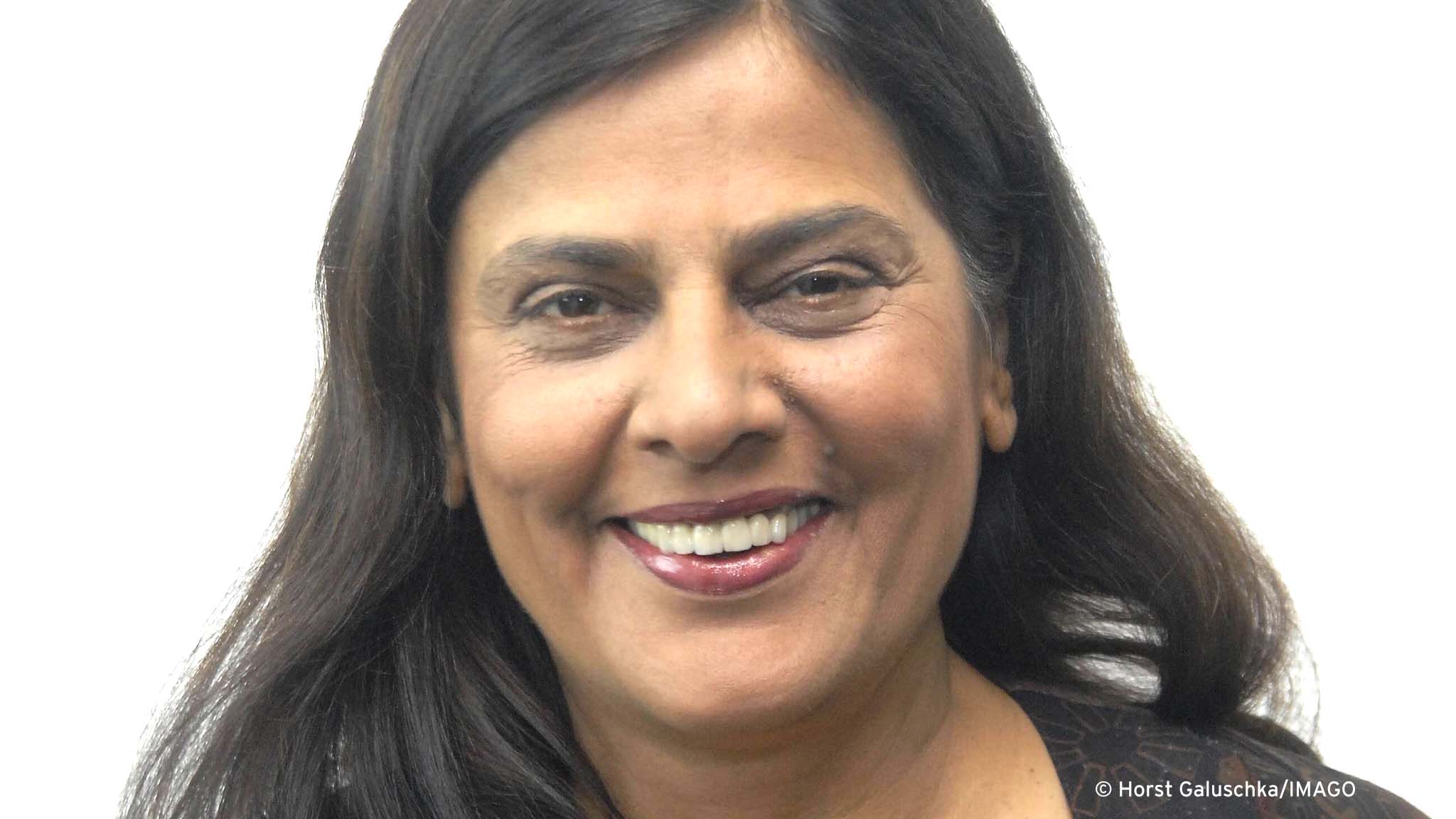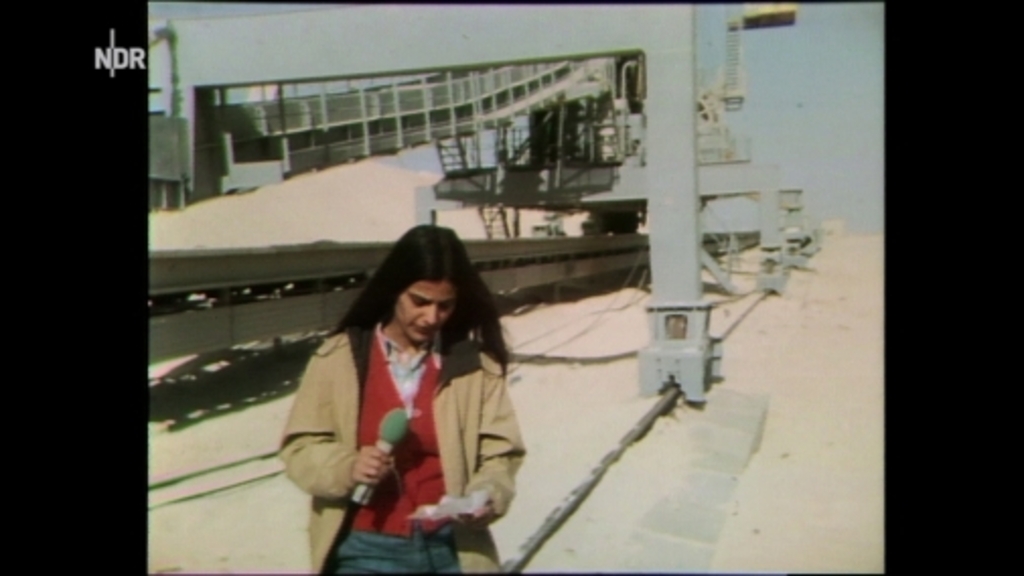"Out of marginalisation, into the mainstream"

The website “The Fifth Wall – An Outsider’s Inside View or an Insider’s Outside View – India on German TV 1957-2005” gathers together almost 70 films dating back to 1963, reportages, photos, letters to her parents, as well as texts by Navina Sundaram. Most of the films are between 30 and 45 minutes long.
There is also a selection of articles about the journalist published between 1964 and 1993, as well as recently recorded commentaries by well-known media personalities such as Dorothee Wenner and Philip Scheffner and academics such as Urmila Goel and Britta Ohm. Navina Sundaram’s private collection and the films – the usage rights wrested from NDR in tough negotiations – are woven here into a startling cultural history of the "other Germany" in the Federal Republic of Germany.
Startling because so many of the themes are once again finding currency: yoga and the restless culture of distraction, labour shortages and immigration, sovereignty and the interests of former colonial powers, journalism and airtime, deadly Hindu nationalism, ‘migration foreground’ (antonym to 'migration background', a term commonly used in Germany to describe someone whose ethnic origin differs to that of the majority population), or an interview with Salman Rushdie from 1984. The subtitle An Outsider’s Inside View or an Insider’s Outside View was written by Sundaram herself in a study of how India was represented on German television from 1957 to 2005.

"Too close for foreign stories"
Navina Sundaram was an editor at NDR and foreign correspondent for ARD from 1964 to 2003. Born in 1945 into a middle-class family from Shimla, the former summer capital of the British at the foot of the Himalayas, she met the tireless ARD Asia correspondent Hans Walter Berg in the early 1960s. Peter Scholl-Latour once described Berg as the "Marco Polo of our times". From 1963, Navina Sundaram presented the programme Asiatische Miniaturen (Asian Miniatures) for NDR. For her first reports, she learned her German texts phonetically off by heart.
At the age of 19, Sundaram went to Hamburg for an NDR traineeship and from 1970, presented a number of programmes including Weltspiegel, extra 3, Panorama as well as several Brennpunkte. Anyone who watched Weltspiegel in the 1980s will remember the young woman with the astute and measured style of questioning and the wonderful instinct for picking up on her interview partners' slip-ups.
Foreign reporting with the same differentiated approach as home reporting – her work is a clear demonstration of this; although several media critics found her "too close for foreign stories – and for home stories not actually born here". In 1992/93 Navina Sundaram became head of the ARD South Asia television studios in New Delhi.
Sundaram’s reports revolved around ongoing decolonisation: South Africa, West Sahara, Guinea-Bissau, India. But what did "Ugandan Asians" have to do with us Germans? Even back then, Navina Sundaram succeeded in illustrating the global-historical significance of overseas events. Her subjects also included environmental politics, exoticism and everyday racism; her reporting evinced the all-too-human face of all sides of the debate.
People were allowed to state clearly to the camera why they didn't want foreigners as neighbours. Everyone stood for and spoke for themselves – no one was taken for a mug. The unearthed treasures also include more recent films such as one about the famous Indian artist Amrita Sher-Gil, which Sundaram was commissioned to make for the Tate Modern by Chris Dercon in 2007.
On the programme Der Internationale Frühschoppen (International Morning Drink) hosted by Werner Hoefer, Navina Sundaram and her colleagues Carola Stern and Roshan Dhunjibhoy analysed the failure of politicians in South Asia with their purported socialism: "'As long as we bang the drum of socialism, we can never be voted out of office,' said a parliamentary deputy from the Indian Congress Party who was voted out of office. He was wrong," says Sundaram. "And that was also because Indira Gandhi fought the poor, instead of fighting poverty."
Her reportage on the Ugandan Asians, expelled overnight by Idi Amin in 1972 after more than 200 years in the country, was outstanding for the fact that from the starting point of the reception camp in England, she paid regular visits to the families over the course of a year. At the time, the Federal Republic of Germany offered to accept 1,000 people.
But only 30 ended up in Germany. Navina Sundaram followed the da Couhna and Singh families as they went about their new everyday lives among friends and at work in the cities of Unna and Leverkusen. With Peter Roesch, his colleague from the Bayer car workshop, Darshan Singh and his family sailed merrily past the camera in a bright-red amphibious vehicle over the Rhine near Leverkusen.
Singh complained to Helmut Kohl about the two-room apartment assigned to him for seven people. Kohl paid him a visit and Singh gets one more room. Sundaram shows 'migration knowledge' before the concept even existed.
Another subject worth revisiting today are Sundaram's reportages on colonial powers and their continued entanglement with countries they purport to be pulling out of. In 1973, Henry Kissinger and Le Duc Thọ jointly received the Nobel Peace Prize for a ceasefire and withdrawal agreement with North Vietnam that hadn’t even come into effect when the award was made. Neither man made a personal appearance at the ceremony.
"Fed up of being at like some sort of exhibit"
For two months in 1964, Sundaram continued wearing a sari in Hamburg. Then, she said: "I was fed up of being looked at like some sort of exhibit." Whereas the sari was initially intended to signify authenticity, she no longer wanted to be marked out because of her clothing. "I wanted to belong; I’d had enough of the phrase: 'Now we want it seen through other eyes'. I wanted to get out of this mental ghettoisation. Out of marginalisation, into the mainstream. What I regarded as normal was declared exotic and vice versa," Sundaram wrote in a 2008 anthology.
Sundaram’s films and interventions also chime with contemporary debates over the acute shortage of skilled labour in Germany. In December 2022, Germany and India signed the first of several planned migration and mobility agreements in a bid to address dramatic shortages on the German labour market. Today, as well as nurses and care personnel, bakers and stonemasons are also coming to Germany from India.
The production company pong curated the archive as part of the Archive außer sich initiative by the Berlin Arsenal – Institut für Film und Videokunst (Institute for Film and Video Art). Incredibly, none of the films are available on any other media platform. Which leaves one wondering why public broadcasters aren’t setting up archives for the best-known German journalists themselves? That almost all the films are available with English subtitles is thanks to two years of work by Sundaram’s brother Vivan, who died in Delhi two days before the premiere. The Goethe Institute funded the film subtitling by Rubaica Jaliwala.
Navina Sundaram made a major contribution to subliminal enlightenment in the Federal Republic of Germany – a great deal measured in terms of what a person can create in a lifetime. She was herself amazed at the amount of work amassed over the course of her life, as she explained in her final interview on the ‘Fifth Wall’ three months before her death in April 2022. For this interview with Deutschlandfunk, she requested her favourite song 'Imagine' interpreted by jazz pianist Vijay Iyer. To stay or to go, fit in or stand out? Questions that haunted the Indian-Hanseatic woman throughout her life. "It’s nicer elsewhere, because I’m here anyway" – I couldn’t have put it more aptly than Wilhelm Busch, said Navina Sundaram.
© Qantara.de 2023
Translated from the German by Nina Coon
As part of the dokumentarfilmwoche hamburg, 'The Fifth Wall' archive will be presented from 25 to 30 April at the festival centre in the fux eG and the film "Darshan Singh will in Leverkusen bleiben" (1973, 43 min., in German with English subtitles) will be shown on 28 April at 4.30 pm at the Metropolis cinema.
Sonja Hegasy is Vice Director of the Berlin Leibniz-Zentrum Moderner Orient and currently a fellow at the International Centre of Advanced Studies ‘Metamorphoses of the Political’ in Delhi.